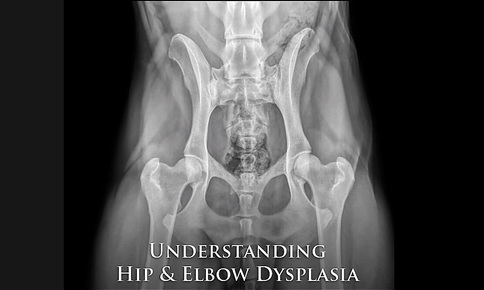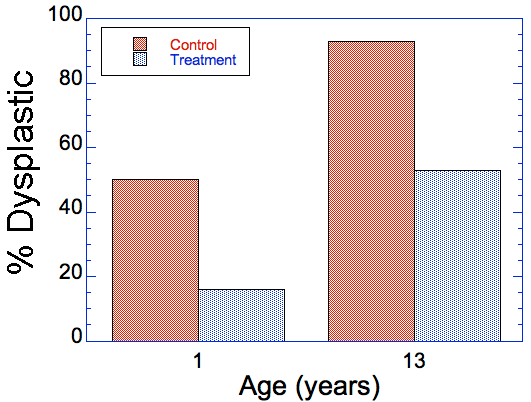Breeders are unfortunately finding themselves burdened with the need to become lay experts in a long list of canine disorders, and the problem that probably tops the list in terms of number of devotees is hip dysplasia. The problem first appeared on the radar in the 1930s, when it was included in an article titled "Some new diseases in the dog", published in the American Kennel Gazette. It started getting significant research attention in the late 1950s, and from there the list of published studies has increased exponentially and continues to this day. More than 50 years of research has failed to definitively determine the cause of hip dysplasia, and after decades of selection, it remains a significant health issue in dogs.
a) Hip dysplasia is a "large breed" disease.
b) Genetic factors are more important than environment in the development of hip dysplasia.
c) Environmental factors are more important than genetics in the development of hip dysplasia.
d) Dogs that develop hip dysplasia had normal hip anatomy at birth.
e) Vitamin C supplements prevent hip dysplasia.
f) Calcium supplements prevent hip dysplasia.
g) Obesity increases the risk of hip dysplasia.
h) If hip dysplasia is caught early enough it can be reversed.
i) Zinc supplements reduce the risk of hip dysplasia.
j) Too much exercise can cause hip dysplasia.
k) Not enough exercise can cause hip dysplasia.
l) Two dogs with severely dysplastic hips can produce puppies with normal hips.
m) Two dogs with excellent hips can produce dysplastic puppies.
(You can take this pool in ICBs Breeding for the Future Facebook group.)
Now try this one: which of these breeds has the highest incidence of hip dysplasia and which has the lowest?
Borzoi
Bloodhound
Bullmastiff
Chesapeake Bay Retriever
Doberman Pinscher
Dogue de Bordeaux
Irish Wolfhound
Kerry Blue Terrier
Komondor
Newfoundland
Norfolk Terrier
Pug
Schipperke
Shih Tzu
Siberian Husky
Scientists have discovered something that dramatically reduces the risk of hip dysplasia in dogs, as shown in this graph: at both 1 year and 13 years old, dogs in the group that received the treatment were much less likely to develop hip dysplasia. Do you know about this treatment? Are your dogs benefiting from it?
Hip Dysplasia Facts, Fallacies, and Fairy Tales
ICB's course Understanding Hip and Elbow Dysplasia focuses on what we know and what we don't, what is fact and what is fiction, what works and what doesn't in reducing the risk of dysplasia.
The next online course STARTS 5 September and is open to students anywhere in the world. You can get more information and register HERE.
Also, students who finish the course will be eligible to participate in ICB's Citizen Science Project, which you can read about HERE.
To learn more about the genetics of dogs, check out
ICB's online courses
Next online course coming up...
*** Understanding Hip and Elbow Dysplasia ***
Starts 5 September 2016
***************************************
Visit our Facebook Groups
ICB Institute of Canine Biology
...the latest canine news and research
ICB Breeding for the Future
...the science of animal breeding



